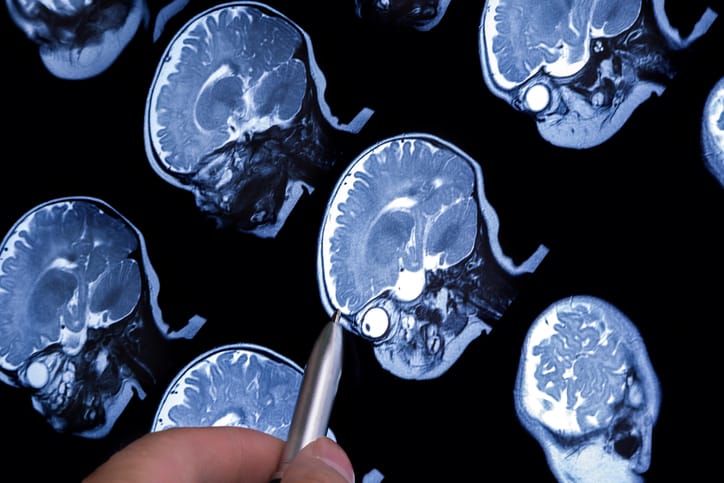An intracranial hemorrhage (ICH) is a rare complication in infants, but it can occur due to severe thrombocytopenia in babies caused by fetal and neonatal alloimmune thrombocytopenia (FNAIT). Bleeding on the brain can lead to permanent neurological damage, development delays and even death if undiagnosed and untreated. ICHs are classified by severity into four different grades, which help guide treatment and predict outcomes.
What is FNAIT?
Fetal and neonatal alloimmune thrombocytopenia (FNAIT) is a rare but serious condition that affects 0.1% of pregnancies in which a pregnant mother’s immune system produces antibodies against the platelets of her fetus. This occurs when a fetus inherits platelet antigens from the father that are not compatible with the mother, typically involving a protein called human platelet antigen (HPA). The mother’s immune system recognizes the fetal platelets as foreign, attacking and destroying them, leading to low platelet levels (thrombocytopenia) in the fetus or newborn.
What is ICH?
ICH occurs in fetuses and newborns affected by FNAIT when maternal antibodies attack and destroy the baby’s blood platelets. Blood loses its ability to clot and minor damage to blood vessels can lead to uncontrolled bleeding that damages the baby’s delicate brain tissue. ICH occurs in 7% to 26% of babies affected by FNAIT and most often develops during pregnancy (more than 75%).
The different grades of ICH
ICH is more common when FNAIT is undiagnosed and either untreated or treated too late. The four grades of ICH are based on the extent and location of the hemorrhage.
Grade I: Mild, with few long-term problems and affects the germinal matrix.
Grade II: Moderate, with low risk of long-term neurological damage and extends to the ventricles.
Grade III: Severe, with risk of long-term neurological damage and expands the ventricles and puts additional pressure on the brain.
Grade IV: Very severe, with a higher risk of long-term neurological damage or death. Moves into surrounding brain tissue.
How are ICHs detected?
During pregnancy, ICH can be detected by fetal MRI or ultrasound. Early medical intervention with weekly doses of intravenous immunoglobulin (IVIG) with or without corticosteroids can help improve outcomes. Early delivery by cesarean is often recommended to remove the fetus from the toxic effects of the maternal antibodies in utero and allow for platelet transfusions after birth.
Post-delivery, ICH can be identified by ultrasound. A CT scan or MRI can be used for more detailed images. Treatment of the newborn with an urgent blood platelet transfusion is the standard treatment when symptoms of FNAIT such as bruising, low platelet levels, skin discoloration and unexplained bleeding are detected. These symptoms also prompt screening for ICH.
In future pregnancies, the risk of ICH is higher if it occurred in the first FNAIT-affected baby. Preventive treatment strategies — namely IVIG with or without steroids — can help delay or minimize the severity of FNAIT in siblings.
Sign up here to get the latest news, perspectives, and information about FNAIT sent directly to your inbox. Registration is free and only takes a minute.

